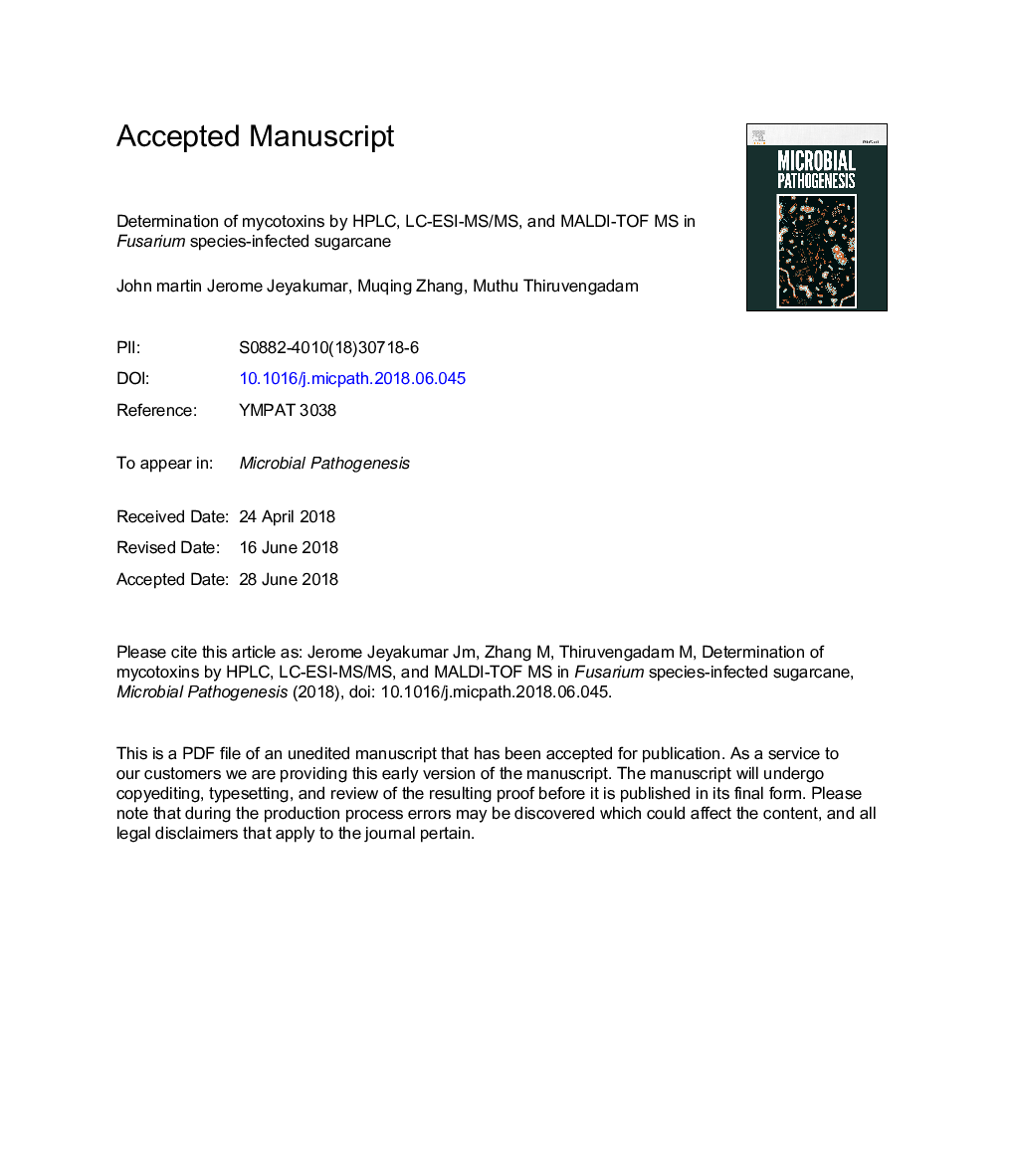| Article ID | Journal | Published Year | Pages | File Type |
|---|---|---|---|---|
| 8749235 | Microbial Pathogenesis | 2018 | 37 Pages |
Abstract
Mycotoxins are secondary metabolites of fungi that are damaging to both animals and humans. Extensive contamination of foods and feeds with mycotoxins is an important problem. Fumonisins, trichothecenes, zearalenone, and aflatoxins are mycotoxins produced by Fusarium species and occur naturally in sugarcane and cereal-based foods, threatening health and food security worldwide. Their distribution in the contaminated material is of great interest for obtaining insight into infection mechanisms and the potential for reducing contamination during food processing. In this study, mycotoxins were evaluated by high-performance liquid chromatography, liquid chromatography-electrospray ionization-tandem mass spectrometry (LC-ESI-MS/MS), and matrix-assisted laser/desorption ionization time of flight mass spectrometry (MALDI-TOF MS) of Fusarium species-infected sugarcane materials. A simple, sensitive, and reliable analytical method was developed for rapidly detecting eight mycotoxins in Fusarium species: fumonisin B1 and fumonisin B2, B-trichothecene mix (deoxynivalenol, nivalenol, 3-acetyl- deoxynivalenol, 15-acetyl-deoxynivalenol), zearalenone, and aflatoxin G1. Analyses were carried out in multiple reaction monitoring mode using the two primary product ions. The results generated by LC/MS and MALDI-TOF MS/MS revealed various mechanisms regulating mycotoxins production, which may help to clarify the roles of sensitive and selective compounds. The results demonstrate that this procedure is suitable for simultaneous determination of mycotoxins in sugarcane and can be performed in routine analysis in mycotoxin laboratories.
Keywords
OTACH3CNZEATCTNIVAFG1FB2FB1Fusarium verticillioidesTrichothecenesMRMDeoxynivalenolortho-phthaldialdehydeOPATFAFusarium proliferatumFusarium oxysporum15-acetyldeoxynivalenol3-acetyl-deoxynivalenolLC–ESI-MS/MSAcetonitrileTrifluoroacetic acidOchratoxin ADONZearalenoneFusariumFumonisin B1Fumonisin B2FumonisinsMycotoxinsmultiple reaction monitoringNivalenolSugarcaneLiquid chromatography-electrospray ionization-tandem mass spectrometryhigh-performance liquid chromatographyHPLC
Related Topics
Life Sciences
Immunology and Microbiology
Microbiology
Authors
John Martin Jerome Jeyakumar, Muqing Zhang, Muthu Thiruvengadam,
